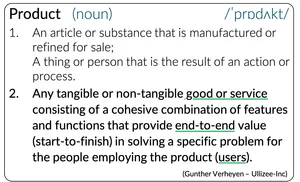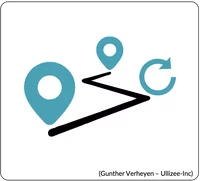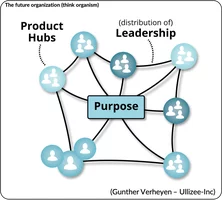Re-imagine your Scrum to firm up your agility
Many of today’s enterprises are hardly fit to play a leading role in today’s world. They are designed on the past-world premises of stability and high predictability, of repetitive work with easily scalable results. They experience profound difficulties having to navigate the predominantly uncertain and unpredictable seas of today’s world. An increase in agility is needed. They adopt Scrum. Rather than updating their past-world structures while introducing Scrum, they twist Scrum to fit their current organization. No more than an illusion of agility is created as a result.
Imagine they would re-imagine their Scrum and re-emerge their organization to firm up their agility…
Organizations, certainly if they have been around for a while, grew into very complicated and extremely interdependent internal structures. These structures are often the root of the problems organizations seek to resolve by adopting Scrum. Work is essentially seen and organized as assembly line work. Many bodies, meetings, hand-overs, resources, deliverables, processes and departments are required to produce and deliver even the smallest chunks of work.
Organizations naturally revert to familiar recipes when facing the need to become more Agile, including mass-production and cascaded approaches, separate transformation projects, copy-pasting what other organizations do or blindly following blueprint prescriptive models.
Individuals are grouped into ‘teams’. The teams are ‘coached’ into complying with standard sets of practices and processes, unified Sprint lengths and electronic process tools. This is uniformly done across the whole organization, regardless business domain, expertise or technology at play.
The existing organizational constructs are not touched, or touching them is cleverly obstructed, if not sabotaged. Teams (often micro-sized) are typically established within existing departments or other forms of functional separations. Higher-up optimizations, like synergies across teams and departments, are ignored in the same way they were before. The systemic disconnectedness that used to inhibit collaborative problem solving between individuals now inhibits collaborative problem solving between micro teams.
More Agile teams does not make a more Agile organization.


Practitioners worldwide turned Scrum into the most applied definition of Agile. Despite Scrum being the new reality, most organizations continue struggling with Scrum. They struggle as they think teams can be constructed. They struggle as they try to map Scrum’s accountabilities on existing functions. They struggle to understand that inspection without adaptation is pointless in Scrum. They struggle to understand how Scrum can wrap a variety of practices, allowing each expression of Scrum to be tuned to a specific context without fundamentally altering the framework. They struggle to re-invent their organization around Scrum to inject agility in their internal structures, although this will ultimately be reflected in their business outcomes. Organizations lack the imagination to picture how Scrum can work for them, mentally blocked to think beyond their current set-up.
Can you imagine Scrum being employed as designed and intended, regardless your current organization? Do you have the will to deeply reflect? Go back to the ‘why’ of your Scrum? Face your clear and apparent urgency? And take action? Recover, reboot, re-imagine?
In order to firm up their agility, courageous seekers re-imagine their Scrum to start re-emerging their organization. They leave behind past attempts, choices and approaches (all that didn’t work). Over-ambition, magnitude anxiety and deflation angst are mitigated by downsizing to small again and subsequently growing iterative-incrementally. They go through incredibly hard work when they:

1/ Re-consider what the ‘product’ is for the implementation of Scrum (or select another clearly bounded and meaningful initiative). Slicing the initiative if it is too BIG.
2/ Re-imagine Scrum for the selected product/initiative/slice.
- Use Product Backlog as the single plan, holding all development work, whether technical, functional or non-functional. Establish what it means for product Increments to be releasable.
- Reset the accountabilities to Product Owner, Scrum Master(s) and Development Team(s), full-time dedicated to the initiative and optimizing for the whole rather than for titles, positions and utilization. The eco-system, this newly established Scrum zone, is facilitated with tools, infrastructure and space.
3/ Create coherent, small and tasteful sashimi releases, no later than by the end of each Sprint, through a controlled and automated deployment pipeline.
Repeat.
Courageous seekers take a few Sprints before expanding to a next product/initiative while still improving the existing initiative(s) and relentlessly removing all impediments to the envisioned state of product delivery. Is an environment in place where people are willing to demonstrate the undiluted accountabilities of Scrum? Are teams self-organizing toward delivering releasable Increments providing start-to-finish value, no later than by the end of a Sprint? Are the teams fully equiped with all skills needed, a dedicated team space, all tools, infrastructure and authorizations?
It takes quite some persistence and belief to keep fighting the past-world tendency to control individuals. Remind yourself (or welcome others reminding you) that value is in the outcome of the work, not in the volume produced. At the Sprint Reviews, consider the value a team has potentially created in a Sprint, and align with them on what seems most valuable to work on next. Move away from judging individuals for their hours spent on individual tasks. Team Engagement is the key.
People who are engaged actually care a lot more about customer outcomes and profitability.

Continue re-thinking your internal constructions as initiatives grow, new initiatives spin up and start delivering value. Solve further organizational issues and inadequate policies as you run into them. Start re-emerging the organization upon conscious acts of re-imagining Scrum; funding, HR policies, rewards and incentives, governance, quality assurance, sales and marketing, legal and regulatory compliance. Unleash a way of working that will sometimes lead you to quite unpredictable destinies.

It is hard work. It is a path of learning, experimenting, falling and getting back up. It is transforming how you work, not adding work and complexity to what you already do. It is gradually re-merging your organization towards a networked system of self-sustaining product hubs. A product hub grows or shrinks as needed (following product ambitions and market needs). A product hub is added or disappears as needed (when spinning up or exiting a product). Embed the empirical approach of inspection and adaptation in your managerial practice and in your organizational set-up.
Use Scrum to grow Scrum.

Published on Java Code Geeks with permission by Gunther Verheyen, partner at our JCG program. See the original article here: Re-imagine your Scrum to firm up your agility Opinions expressed by Java Code Geeks contributors are their own. |


